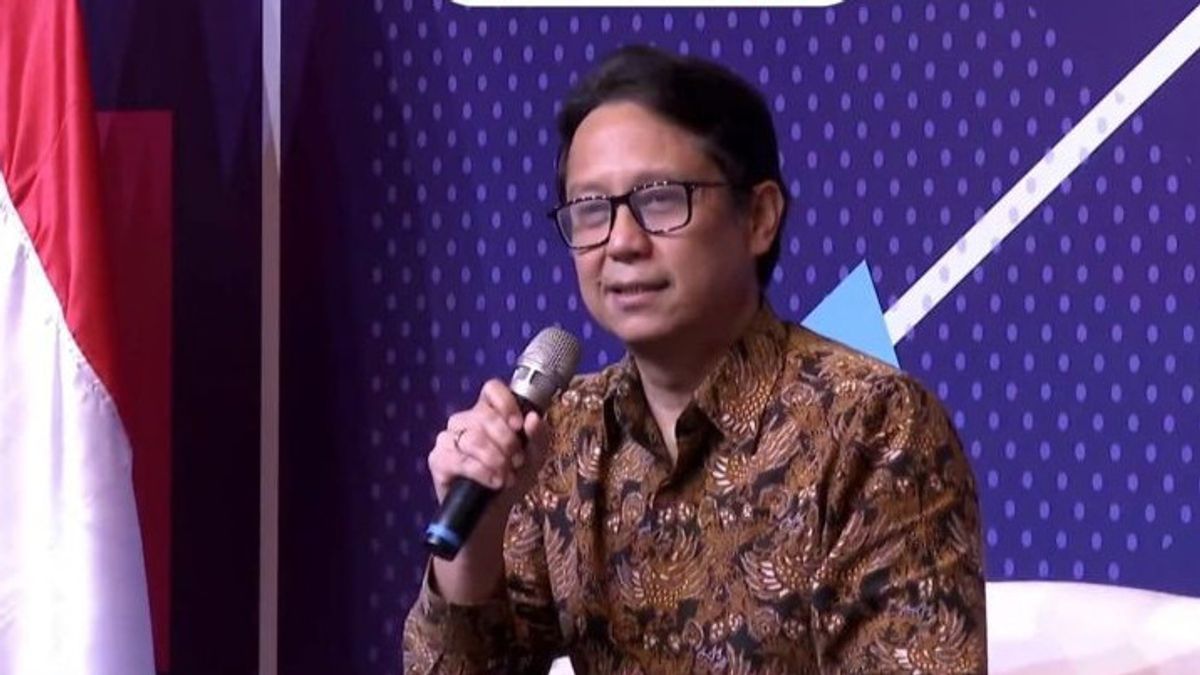Minister of Health (Menkes) Budi Gunadi Sadikin said the digitalization process helped facilitate various affairs in various fields, including in the health sector.
"Come to the Indonesian doctor with a dead end operation of Rp. 5 million, to Singapore Rp. 50 million. The information is not transparent. Digitalization helps (digitalization helps)," he said at the OJK Risk & Governance Summit which was followed online in Jakarta, Antara, Thursday, November 30.
Minister of Health Budi revealed that he wanted to make various health-related matters in Indonesia digitized. One of the first steps was initiated during the COVID-19 pandemic in Indonesia, where the Indonesian Ministry of Health facilitated the Indonesian people by consulting via telemedicine.
When the COVID-19 pandemic took place, he explained, the results of the virus test were digitized and sent to the Ministry of Health for further investigation. If the diagnosis is positive, then the Ministry of Health sends messages via WhatsApp (WA) to patients to consult with several telemedicine service providers who have worked together to be given prescription drugs.
Then, he continued, the prescription for the drug was sent to the pharmacy digitally, then the pharmacy sent the medicine to patients through goods delivery services.
"The first time I was praised was that. So people were sick for three days without knowing why he knew he got the medicine. Because without him realizing it, there was a digitalization process behind that," he said.
Minister of Health Budi, who has an economic background, revealed that health digitization efforts were inspired by the banking system. Where the transaction data sent has a clear flow from the store/trade, which is then sent to the central peladen (server), then sent to the relevant bank to ensure the balance is available and eventually returned via the original route so that the transaction can be completed.
With a similar system, he continued, the health system in Indonesia should be repaired. One of them is if you want to change to a hospital during treatment, where patients no longer need to be bothered with a complicated administrative system.
"That's mindahin the data, you have to bring a pile of papers. The data is not digital, it's not standard, it's not safe, it feels like it's breaking into. So digitalization helps," he said.
It is known that the digitalization of health is the main focus of the Ministry of Health listed in the sixth pillar of healthy transformation, namely the transformation of health technology. One of these transformations is realized in the Electronic Medical Record (RME) which is integrated into the SATUSEHAT application which was launched on November 11, 2023.
This technology allows patients to see history of visits, doctor diagnosis, and drugs given in health care facilities (fasyankes) at 2,498 health facilities that have been integrated into the SATUSEHAT application.
SEE ALSO:
The English, Chinese, Japanese, Arabic, and French versions are automatically generated by the AI. So there may still be inaccuracies in translating, please always see Indonesian as our main language. (system supported by DigitalSiber.id)
Most Popular Tags
#Prabowo Subianto #New Year #Syria #nataru #NatalPopular
18 Desember 2024, 00:27
18 Desember 2024, 07:25



















